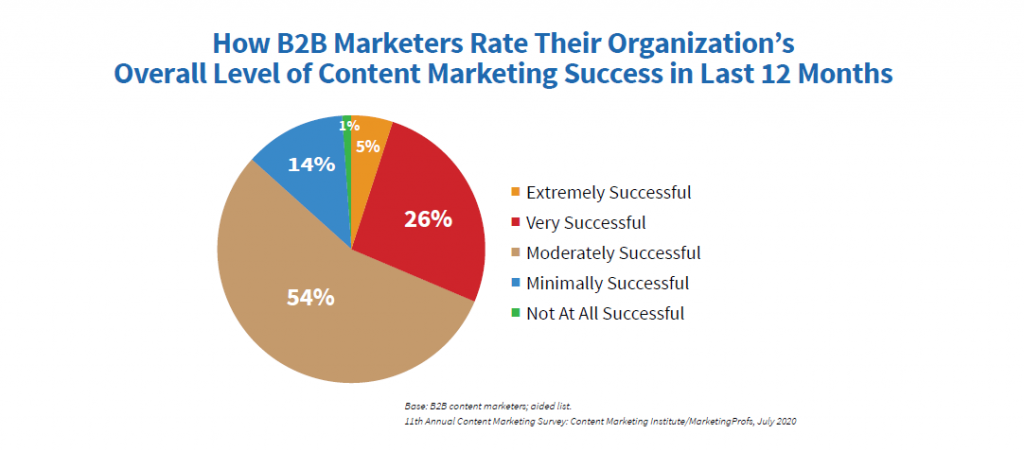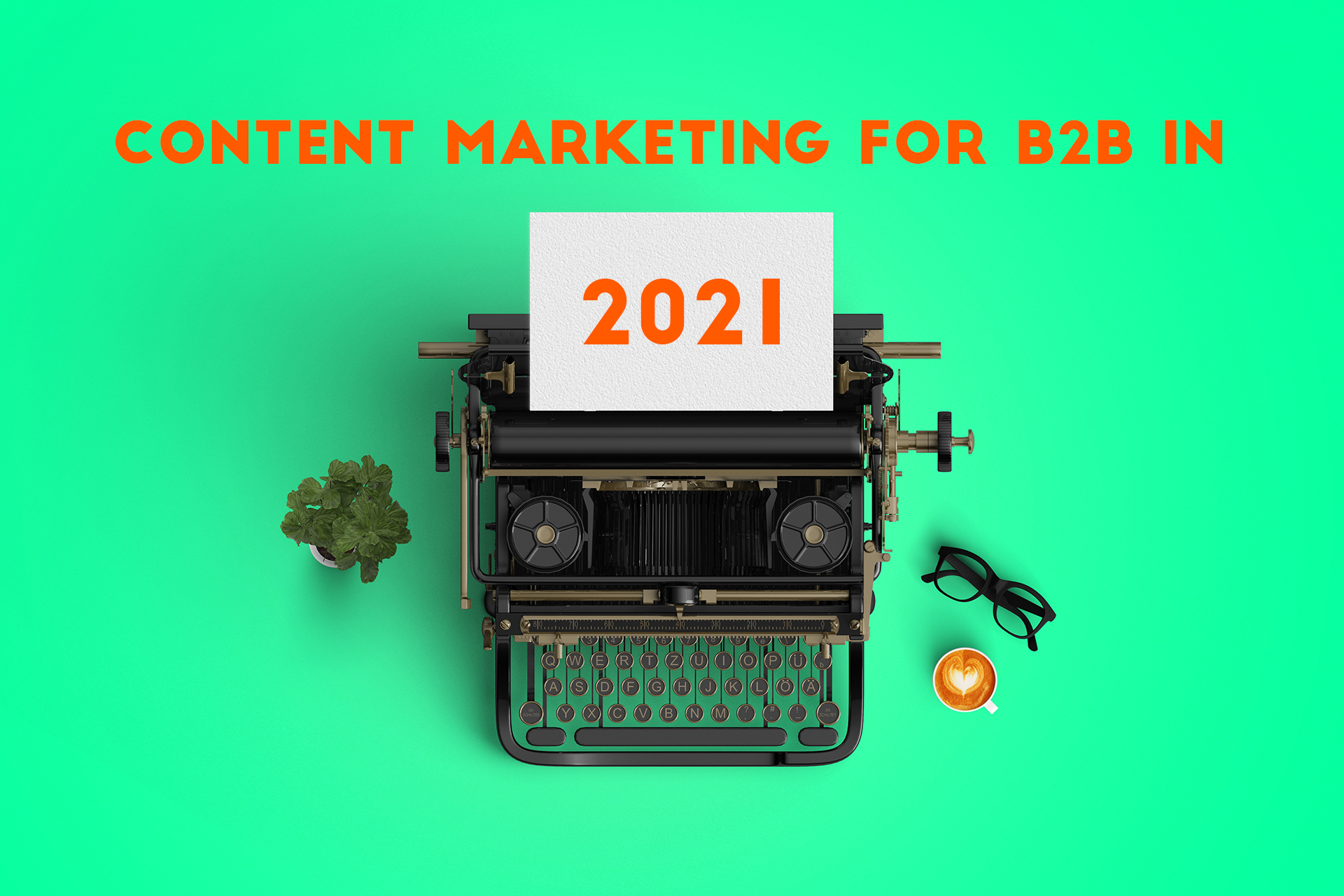The COVID-19 pandemic may still be ongoing but in 2021, things are starting to look up and businesses and economies are raring to get back into gear.
Given the changes that happened in 2020, many businesses may have faced challenges in implementing their marketing plans when affected by the pandemic, especially for content marketing.
One of the biggest challenges many B2B marketers faced was having to do more with less as the pandemic continued to wreak havoc on the global economy.
To Change or Not to Change
Nonetheless, despite all the challenges thrown their way, B2B marketers have proven to be resilient and quick to adapt in the past year and they continue to believe in the value of their content.
But even then, not all B2B marketers are equal.
In fact, only 79% of businesses had an existing content marketing strategy in place prior to the pandemic.
Out of those with an existing content marketing strategy, up to 70% of B2B marketers have had to make major or moderate adjustments to address the impact of the pandemic upon their businesses. (Content Marketing Institute)

A quick turnaround response was essential to address the ever-changing situation in 2020.
Businesses that had quickly made adjustments to their content marketing strategy and editorial calendars have benefited, with 31% of B2B marketers reporting that their business has been extremely successful with content marketing (Content Marketing Institute).

What about 2021?
Staying ahead of the competitors means getting innovative with your content marketing strategy.
In the short-term, it may have been fine to immediately address the pandemic’s impact with changes to messaging, calendars, and distribution. However, a more long-term strategy needs to be put into place to ensure that your content can continue to adapt to address revised policies.
Let’s take a look at the latest trends for B2B content marketing in 2021:
Longer Is Better
For many B2B brands, content marketing is the very backbone of customer acquisition.
Buyers need to be convinced that the product or service being pitched will have some serious ROI before sinking in time, money and effort. This makes purchasing decisions incredibly complex and slow to realise especially for larger, more complex businesses.
If more in-depth information is available ahead of time, this would assist buyers in their purchasing decisions before even speaking to a salesperson.
Blog posts are useful as an educational and awareness tool and long-form content can provide value to prospects and customers besides helping to build search engine authority (Stratabeat).
SEMrush conducted a study and found that articles with at least 3,000 words generated 3X more traffic, 4X more shares. and 3.5X more backlinks than short-form content.
Yet, according to HubSpot, the ideal length of a blog post for SEO should be between 2,100 to 2,400 words.
It however, doesn’t mean that shorter content of 1,500 words or so would make for bad reading. In fact, the opportunity for good SEO ranking still remains as long as some SEO best practices are followed, such as:
- Proper backlinking.
- Attempting to capture position zero on Google search.
- Adding alt-text to images.
- Use media-rich content in the post body (e.g. images, videos, social media embeds, etc.)
- Achieving domain and topic authority.
AI-powered Content Marketing
Technology is constantly moving ahead in leaps and bounds. So commonly found today that you never think about it anymore, Artificial Intelligence (AI) is the 4th generation of the industrial revolution and drives data analysis, processes and operations.
Used across a multitude of industries and in a multitude of ways, AIs are here to stay. For businesses. AI-powered marketing is used to derive better insights, faster analysis and streamline routine tasks.
In content marketing, AIs are invaluable in helping to make some amazing changes (Atomicreach):
- Data driven feedback during content creation – AI tools provide data-driven feedback and insights to content creators through content intelligence. Businesses are using content intelligence to create personalized content based on the prospect’s preferences, challenges and thought processes.
- AI-powered content profiling – AI can help you streamline content creation through a content profile and audit the existing content of your website so that you can understand how your posts perform, especially for posts that come out on top. This allows you to focus on creating content that you know will generate results.
- AI suggested topics – AI based content strategy tools can perform competitive research on selected topics, allowing content marketers to discover content ideas and offer suggestions on which ideas should be pursued.
- AI-led content generation – AI can help content marketers in content writing by utilizing algorithms to create content automatically. Through the use of Natural Language Generation (NLG), AIs can convert computerised data into written narratives. While some short stories are currently written by AI bots, eventually, AIs may even be able to produce long-form content.
- AI improves content accuracy – AI based tools can aid in automating proofreading by checking spellings, grammar, emotion, paragraph density, and many other aspects to ensure that the content is suited for your target audience.
- AI aids in hyper-personalised profiling – Businesses are using AI based tools to track consumer behaviour and preferences. These tools are also helping marketers to optimize copy and content for individual users and offering each user a personalised unique brand experience (Stratabeat).
Building Content Communities
One of the top B2B marketing trends for 2021 is building content communities!
When you think of communities, you’d immediately think of social media, such as Facebook or LinkedIn. But the world online is already a crowded place.
Social media alone may not be as effective as a content community that’s built off your own site.
A University of Michigan study discovered that customers that participated in a brand’s online community spent 19% more than other customers.
Content communities are helping brands to create word-of-mouth marketing and getting people to notice them not as businesses but a living, breathing entity. Building trust and loyalty whilst engaging customers are the keys to making content communities work (Neil Patel).
Social media still helps a brand establish trust and credibility but building a content community on your platform will let you maintain control and magnify engagement.
Subscription-based communities are also trending, where subscribers are required to pay for access to the content.
While it seems counter-productive in a world where free options are available practically everywhere, subscription-based communities continue to thrive because they’re providing valued content to a highly committed audience.
Some of the benefits from content communities include (Riverbed Marketing):
- Brand Ambassador development
- Faster and more relevant customer feedback
- Reduce support costs
- Increased engagement and social sharing.
Video Rules
Video continues to overtake the content marketing space in 2021.
Google’s research indicated that 70% of B2B buyers and researchers are watching videos at some point in their buying journey (BroadSuite).
Professionally edited video common to Youtube and other social channels still count but it’s live video that now matters more. In fact, 82% of people prefer a brand’s live video over social posts while 80% prefer it over reading a blog (Stratabeat).
From the buyer’s perspective, an informative video can engage them in a quicker time than reading an article. Within a few minutes, they would know everything they needed to know about the product or solution instead of scrolling through multiple articles for the right section.
In addition, getting a behind-the-scenes look at a brand has long been commonplace in the B2C space, but is becoming increasingly important for B2B. Brands that take a down-to-earth approach, are personable and authentic, will appeal to humans no matter the product.
Live video also gives the audience an opportunity to engage with the real humans that stand behind your brand.
Unlike professionally taken video, live video doesn’t require editing and is far more economical for B2Bs. After all, the video doesn’t have to be of the highest quality and can be taken with just your phone!
Content In Every Way Possible
Let’s face it, there’s a LOT of content on the web. Why add more stuff to it if it doesn’t help your site get a better ranking on Google Search?
Repurposing content or content atomisation means using the same content for a variety of platforms.
Since creating a single long-form piece of content takes time and effort and tons of research, content atomisation is used for the repurposing of ideas from a large piece of content into several smaller pieces of content.
For instance, if we split this blog post up into chunks, we could make:
- Infographics on content marketing trends for 2021
- An educational email newsletter series based on content marketing trends
- Webcasts for how-tos on long-form content creation and content atomisation
- Webinars for discussions on AI assisted marketing
- A how-to series of articles on building content communities
- Social media graphics for content marketing tips and tricks
- Case studies on content community success,
- and more….
Given a few key ideas, you could build up whole stacks of consistent, effective and seamless content for marketing. Content atomisation makes it easier to scale content creation, saving time and effort for other key marketing areas.
Get Started
If you haven’t yet changed your content marketing strategy for 2021, give some thought to these trends.
Take an audit of your current content, see what works for your business and industry and brainstorm with your marketing team on creating content and a content marketing strategy that suits you.
And if you need more help, contact us anytime for a consultation.

